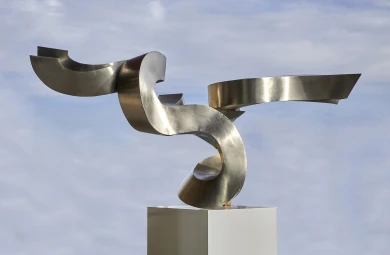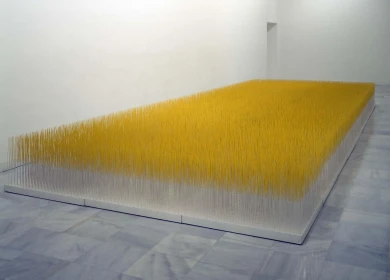
Penetrable
- Technique
- Assemblage
- Dimensions
- 485 x 787 x 867 cm
- Year of entry
- 1988
- Registration number
- AS07477
- Date
1982
- Observations
Entry date: 1988 (from the redistribution of the Museo Español de Arte Contemporáneo [MEAC] collection)
- Materia
Painted wood and PVC flexible tubes
Jesús Soto is one of the key artists of twentieth-century Latin America, with major contributions, from the 1950s onwards, to Kinetic Art — works which incorporate movement as part of their outward form — and to new visualities stemming from geometric abstraction, with optical vibration as a focal point.
This work is part of Penetrables, a pivotal series in his oeuvre which he embarked upon in the late 1960s. The pieces materialise in enclosed spaces full of isometric elements on superimposed planes: a series of hanging mobiles that spectators must walk through to experience the work. Through Penetrables, Soto’s pieces took on an architectural quality, prompting the researcher Mónica Amor to understand this development in relation to the ecological urbanism and cosmic imagination that revolutionised public space at the time, thought centred on mobile architecture that resulted from the collective emancipation in the wake of the revolts of May ’68. As the artist stated: “There are no longer spectators; there are only participants” (1983).
A penetrable was conceived as an aggregation of relations. Its mobile elements evince the relations that always exist in space, albeit inadvertently. For Soto, the void is another state of full matter, hence his conception of this packed space as a displaceable gelatine, fluid and elastic both. Guy Brett saw in these works a sign of the elimination of the real and the fictional in public space. Soto elaborated further: “The penetrable is not even a work; it is an idea in space that can materialise in any situation and on any scale… If possible, you could even cover the entire planet…” (2011).
Manuel Segade



